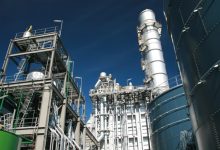It’s fair to assume that if 95,000 electricity customers lost power for four hours in the eastern states it would have made headlines across the media. And if the blame could be directed towards wind or solar, it might even see relentless anti-renewables campaigners such as Liberal MP Craig Kelly discover new shades of purple.
But two reasons made this event go virtually unreported. One, it happened in early January in Western Australia, and two, renewables were not to blame: According to a new report from the Australian Energy Market Operator, it was the result of a failure at the modern gas unit at Kwinana, and a cascading series of events involving other gas generators.
It’s important to note because some of the current conversation about system reliability and security is focused only on renewables. But things can and do go wrong with fossil fuel generators, as AEMO finds out about a hundred times a year on the main grid, which is about how often a big coal generator trips. And sometimes these fossil fuel failures have major consequences, as W.A customers found out in January.
The event began just after 8pm local time on January 10, when the 335MW Newgen Kwinana gas generator – a “highly-efficient, reliable and environmentally sound electricity supply”, according to its website – which had been winding back its output due to a lube oil leak, suddenly tripped when the lube oil ignited. That shut down the gas turbine, with the steam turbine also tripping moments later.
That took 250MW out of the system but the situation looked manageable as the market operator had sufficient spinning reserve and the frequency recovered. But then things started to go awry.
First, because the generating units at Pinjar gas-fired power station powered up to make up the NewGen shortfall, but that created a local network constraint that bound on two wind farms in the north, Badgingarra and Beros, effectively blocked their output, caused “runbacks” and obliged them to wind back a combined 75MW of output.
That wasn’t helpful, but things got even worse when four embedded generators at the Worley Alumina refinery that had also responded to the shortfalls, then also tripped, causing a 135MW reversal of flows. The trips were caused by a variety of high steam pressures and high condenser pressures.
Then more fossil fuel generators failed. Two units at the Alinta Pinjarra gas-fuelled power station, which were supposed to be providing 130MW or more, went against dispatch instructions due to problems in their control systems and wound back the output to 25MW.
Then another seven small generators, with a total output of 10MW, including three landfill gas units, two very small wind units, a bioenergy plant and a waste gas plant, also tripped. AEMO says these had minimal impact but clearly weren’t helpful.
Things were starting to look tight for the grid because the operator was running out of spinning reserve due to these cascading events. It issued an order to the Kemerton peaking gas generator, but the unit didn’t respond. The AEMO control people shouted a little louder and Kemerton managed to get another unit up and running. AEMO later found out that the nature of the first order was no longer part of protocol.
The cascading problems finally caused the Under Frequency Load Shedding scheme to be implemented, which means that customers are cut off in order to keep the frequency under control – it had already deviated to a dangerously low level of 49.26Hz. The power supply for 94,578 customers across 76 distribution feeders was cut off – a total of 123MW. Some customers were without power for up to four hours.
AEMO had a stiff talking to with all concerned. NewGen Kwinana was repaired, came back on market on January 21, then tripped again on February 10, before getting itself properly organised. Poor old Badgingarra wind farm was constrained to zero output, and then to 50 per cent for a month, until the network constraint equations (no fault of its own) were solved.
Worley Alumina was reminded to keep the condenser/steam pressures of its generators within safe operating ranges in future events, and Alinta Pinjarra is still trying to solve the control settings on its generators.
AEMO, for its part, saw no need to amend market rules, but did say that it is working with the state government to “make extensive changes to governing artefacts” so it can facilitate the transition of the power system from the current centralised, firm, synchronous generation to decentralised, variable, non-synchronous generation.









